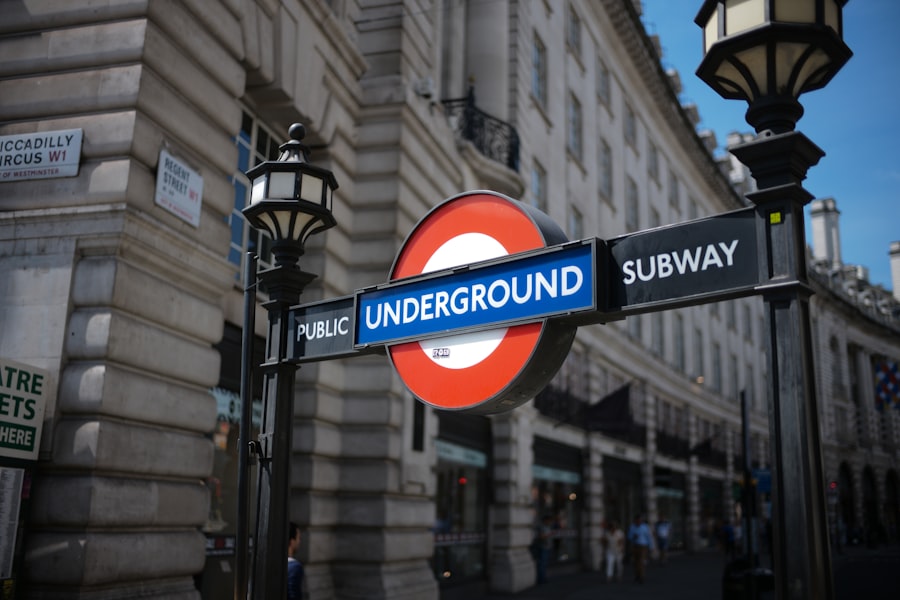Knob-and-tube wiring, a method of electrical installation that dates back to the late 19th century, is characterized by its use of ceramic knobs and tubes to support and protect electrical wires. This system was widely adopted during a time when electricity was becoming a staple in homes, providing a means to safely distribute power throughout residential spaces. The knobs serve as anchors, holding the wires in place, while the tubes protect the wires from contact with wooden structures, thereby reducing the risk of fire.
Despite its historical significance, knob-and-tube wiring is now considered outdated and is often scrutinized for its safety and efficiency. One of the primary concerns with knob-and-tube wiring is its inability to handle the electrical demands of modern households. As technology has advanced, so too have the electrical needs of homes, with an increasing number of devices requiring power.
Knob-and-tube systems were designed for a much lower capacity, typically accommodating only a few circuits. This limitation can lead to overloading, which poses significant safety risks. Furthermore, the insulation surrounding the wires can deteriorate over time, increasing the likelihood of short circuits and electrical fires.
Understanding these aspects of knob-and-tube wiring is crucial for homeowners who may be living in older properties and considering their electrical safety.
Key Takeaways
- Knob-and-tube wiring systems were commonly used in homes built before the 1950s and have specific characteristics that homeowners should be aware of.
- Signs that your home’s wiring needs an upgrade include flickering lights, frequently blown fuses, and discolored or warm outlets.
- When hiring a professional electrician for a wiring upgrade, it’s important to ensure they are licensed, experienced, and knowledgeable about modern wiring systems.
- Upgrading to modern wiring systems can improve the safety, efficiency, and functionality of your home’s electrical system.
- Budgeting for a wiring upgrade should include the cost of materials, labor, and any necessary permits, as well as potential additional expenses for unexpected issues.
- Potential safety hazards of outdated wiring include electrical fires, shock hazards, and limitations on the use of modern appliances and electronics.
- Benefits of upgrading your home’s wiring include increased safety, improved energy efficiency, and the ability to accommodate modern electrical needs.
- Maintaining your new wiring system involves regular inspections, addressing any issues promptly, and following proper electrical safety practices.
Signs Your Home’s Wiring Needs an Upgrade
Here is the rewritten text with 3-4 Identifying the Need for an Electrical Wiring Upgrade
Frequent Tripping of Circuit Breakers or Blown Fuses
———————————————–
One of the most common indicators that a home’s wiring may require an upgrade is frequent tripping of circuit breakers or blown fuses. These occurrences suggest that the electrical system is struggling to handle the load placed upon it, which can be a direct result of outdated wiring or insufficient capacity.
Other Warning Signs
——————-
Additionally, flickering lights or outlets that feel warm to the touch are red flags that should not be ignored. These symptoms can indicate poor connections or overloaded circuits, both of which can lead to more severe electrical issues. Another sign that a home’s wiring may require attention is the presence of two-prong outlets.
Outdated Outlets and Unusual Noises
———————————–
Modern electrical standards require three-prong outlets for safety reasons, as they provide a ground connection that helps prevent electrical shocks. Homes with only two-prong outlets may not have been updated to meet current safety codes, indicating a potential need for an upgrade. Homeowners should also be aware of any unusual smells or sounds coming from their electrical systems, such as buzzing or sizzling noises, which can signal serious problems that necessitate immediate professional evaluation.
Hiring a Professional Electrician

When it comes to upgrading a home’s wiring system, hiring a qualified professional electrician is essential. A licensed electrician possesses the expertise and knowledge necessary to assess the current wiring situation accurately and recommend appropriate solutions. They are trained to identify potential hazards and ensure that any work performed adheres to local building codes and safety regulations.
Attempting to undertake electrical work without proper training can lead to dangerous situations, including electrocution or fire hazards. Moreover, a professional electrician can provide valuable insights into the latest technologies and materials available for modern wiring systems. They can help homeowners choose energy-efficient options that not only enhance safety but also reduce energy costs in the long run.
By entrusting this critical task to an expert, homeowners can have peace of mind knowing that their electrical systems will be installed correctly and safely, minimizing the risk of future issues.
Upgrading to Modern Wiring Systems
| Metrics | 2018 | 2019 | 2020 |
|---|---|---|---|
| Homes Upgraded | 1000 | 1500 | 2000 |
| Cost Savings | 10% | 15% | 20% |
| Energy Efficiency | 25% | 30% | 35% |
Upgrading to modern wiring systems involves replacing outdated materials with contemporary alternatives designed to meet today’s electrical demands. One popular option is the use of non-metallic sheathed cable (NM cable), which is more flexible and easier to install than older systems. NM cable is insulated and provides better protection against electrical hazards, making it a preferred choice for many electricians when rewiring homes.
Additionally, modern wiring systems often include features such as ground fault circuit interrupters (GFCIs) and arc fault circuit interrupters (AFCIs), which enhance safety by preventing electrical shocks and reducing the risk of fires. Another significant advantage of upgrading to modern wiring systems is the increased capacity for handling multiple circuits. This allows homeowners to use various appliances and devices simultaneously without overloading the system.
Furthermore, modern wiring can accommodate smart home technologies, enabling homeowners to integrate automation and energy management systems into their residences. This not only enhances convenience but also promotes energy efficiency, aligning with contemporary sustainability goals.
Budgeting for a Wiring Upgrade
Budgeting for a wiring upgrade requires careful consideration of several factors, including the size of the home, the extent of the work needed, and local labor costs. Homeowners should begin by obtaining multiple quotes from licensed electricians to gain a better understanding of potential expenses. It is essential to factor in not only the cost of materials but also labor fees, which can vary significantly based on location and complexity of the project.
A comprehensive budget should also include contingencies for unexpected issues that may arise during the upgrade process. In addition to direct costs, homeowners should consider potential long-term savings associated with upgrading their wiring systems. While the initial investment may seem substantial, modern wiring can lead to reduced energy bills due to improved efficiency and safety features.
Moreover, having an updated electrical system can increase property value and appeal to future buyers, making it a wise financial decision in the long run.
Potential Safety Hazards of Outdated Wiring

Outdated wiring poses numerous safety hazards that can jeopardize both property and personal safety. One of the most significant risks associated with old wiring systems is the increased likelihood of electrical fires. As insulation deteriorates over time or as circuits become overloaded, the risk of short circuits rises dramatically.
According to fire safety statistics, faulty wiring is one of the leading causes of residential fires, underscoring the importance of addressing outdated systems promptly. In addition to fire hazards, outdated wiring can also lead to electric shocks or electrocution. Homes with insufficient grounding or improper connections are particularly vulnerable to these dangers.
Furthermore, older systems may lack essential safety features such as GFCIs or AFCIs, which are designed to protect against shock and fire risks. Homeowners must recognize these potential hazards and take proactive steps to ensure their electrical systems are safe and up-to-date.
Benefits of Upgrading Your Home’s Wiring
Upgrading a home’s wiring system offers numerous benefits that extend beyond mere compliance with safety standards. One significant advantage is enhanced safety; modern wiring systems are designed with advanced protective features that minimize risks associated with electrical faults. This not only protects residents but also provides peace of mind knowing that their home is equipped with reliable electrical infrastructure.
Additionally, upgraded wiring can lead to improved energy efficiency. Modern systems are better equipped to handle high-demand appliances and smart home technologies without overloading circuits. This efficiency translates into lower energy bills and a reduced carbon footprint, aligning with growing environmental concerns among homeowners.
Furthermore, an updated electrical system can increase property value, making it more attractive to potential buyers in a competitive real estate market.
Maintaining Your New Wiring System
Once a home’s wiring system has been upgraded, ongoing maintenance becomes crucial for ensuring its longevity and safety. Homeowners should schedule regular inspections by a qualified electrician to identify any potential issues before they escalate into serious problems. These inspections can help detect wear and tear on components, ensuring that everything remains in optimal condition.
In addition to professional inspections, homeowners should also be proactive in monitoring their electrical usage and being aware of any changes in performance. Unusual sounds or smells emanating from outlets or appliances should prompt immediate attention from an electrician. By staying vigilant and maintaining open communication with their electrical service provider, homeowners can enjoy the benefits of their upgraded wiring system for years to come while ensuring their home remains safe and efficient.
If you are dealing with outdated wiring or knob-and-tube systems in your home, it is crucial to address these issues promptly to ensure the safety of your household. For more information on the importance of updating old electrical systems, check out this insightful article on how international law can hold leaders accountable for human rights violations. This article sheds light on the legal implications of neglecting crucial safety measures, emphasizing the need for timely upgrades to prevent potential hazards.
FAQs
What is outdated wiring or knob-and-tube systems?
Outdated wiring refers to electrical systems that are no longer up to code or considered safe by modern standards. Knob-and-tube wiring is a specific type of outdated wiring that was commonly used in homes built before the 1950s.
Why are outdated wiring or knob-and-tube systems considered unsafe?
Outdated wiring and knob-and-tube systems may pose a fire hazard due to their age, deterioration, and inability to handle the electrical demands of modern appliances and technology. They may also lack the grounding and insulation features found in modern wiring systems.
What are the signs of outdated wiring or knob-and-tube systems?
Signs of outdated wiring or knob-and-tube systems include frequently blown fuses or tripped circuit breakers, flickering lights, discolored or warm outlets, and a burning smell near outlets or switches. Homeowners may also notice outdated two-prong outlets instead of modern three-prong outlets.
How can outdated wiring or knob-and-tube systems be addressed?
To address outdated wiring or knob-and-tube systems, homeowners should consult with a licensed electrician to assess the condition of the wiring and determine the best course of action. This may involve rewiring the entire home or specific areas, upgrading electrical panels, and installing modern outlets and fixtures.
Is it important to address outdated wiring or knob-and-tube systems?
Yes, it is important to address outdated wiring or knob-and-tube systems to ensure the safety of the home and its occupants. Ignoring outdated wiring can lead to electrical hazards, increased risk of fire, and potential issues with insurance coverage.






